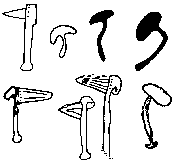The Adaptive Unconscious
Please read an awesome article entitled Mysteries of the mind:Your unconscious is making your everyday decisions by By Marianne Szegedy-Maszak
Read the whole article at US NEWS AND WORLD REPORT
here are some excerpts:
According to cognitive neuroscientists, we are conscious of only about 5 percent of our cognitive activity, so most of our decisions, actions, emotions, and behavior depends on the 95 percent of brain activity that goes beyond our conscious awareness. From the beating of our hearts to pushing the grocery cart and not smashing into the kitty litter, we rely on something that is called the adaptive unconscious, which is all the ways that our brains understand the world that the mind and the body must negotiate. The adaptive unconscious makes it possible for us to, say, turn a corner in our car without having to go through elaborate calculations to determine the precise angle of the turn, the velocity of the automobile, the steering radius of the car. It is what can make us understand the correct meaning of statements like "prostitutes appeal to pope" or "children make nourishing snacks" without believing that they mean that the pope has an illicit life and cannibals are munching on children.
(snip)
When trying to probe the minds of consumers, Zaltman wondered if there was a way to move beyond the often-unreliable focus group to get at the true desires of consumers, unencumbered by other noise, which would finally result in more effective sales and marketing.
His solution became U.S. Patent No. 5,436,830, also known as the Zaltman Metaphor Elicitation Technique, which is, according to the patent, "a technique for eliciting interconnected constructs that influence thought and behavior." From Hallmark cards to Broadway plays, from Nestle's Crunch bars to the design for the new Children's Hospital of Pittsburgh, ZMET has been used to figure out how to craft a message so that consumers will respond with the important 95 percent of their brains that motivates many of their choices. How? Through accessing the deep metaphors that people, even without knowing it, associate with a particular product or feeling or place.
(snip)
But in a stunning study published this month in the journal Neurology, researchers used functional magnetic resonance imaging to study the brains of two minimally conscious patients and compared them with the brains of seven healthy men and woman. The scans revealed that the minimally conscious patients had less than half of the brain activity of the others. But then all the subjects were played a tape made by a family member or friend, recounting happy memories and shared experiences. One minimally conscious man listened to his sister reminiscing about her wedding and about the toast that he made. The result was astonishing: All those who were scanned, including the minimally conscious patients, shared similar brain activity, some with activation in the visual cortex. "This shows that there is a life of the mind beyond what is apparent," says Joseph Fins, chief of the medical ethics division of New York-Presbyterian Hospital-Weill Cornell Medical Center. But Fins, who was not involved in the study, points out that philosophical questions also emerge. "Does this mean that they are seeing words? Visualizing semantic concepts? Does this in some way conceptualize consciousness?" As Zaltman points out, language is only the narrowest determination of our thoughts. This study shows that our brains, even damaged brains, are exquisitely attuned to that fact.
Wow, what a great read.
 the world is what we make it
the world is what we make it
























0 Comments:
Post a Comment
<< Home